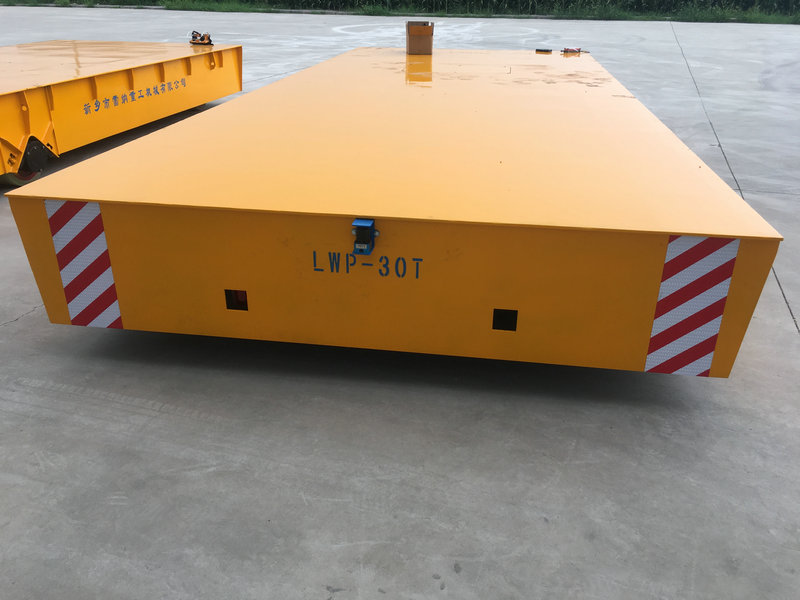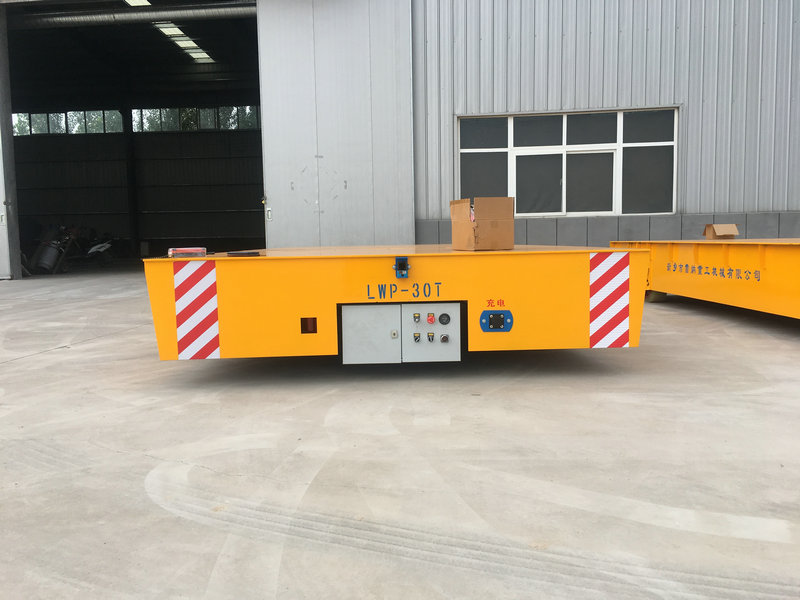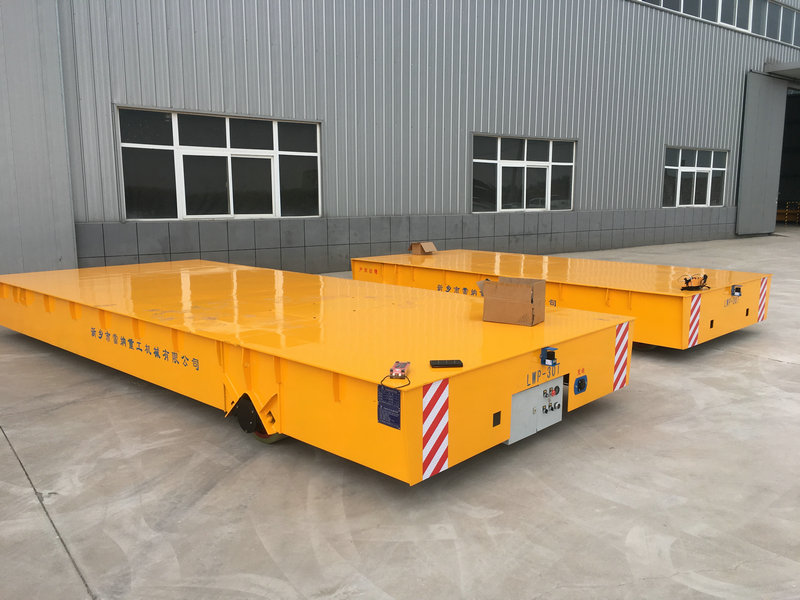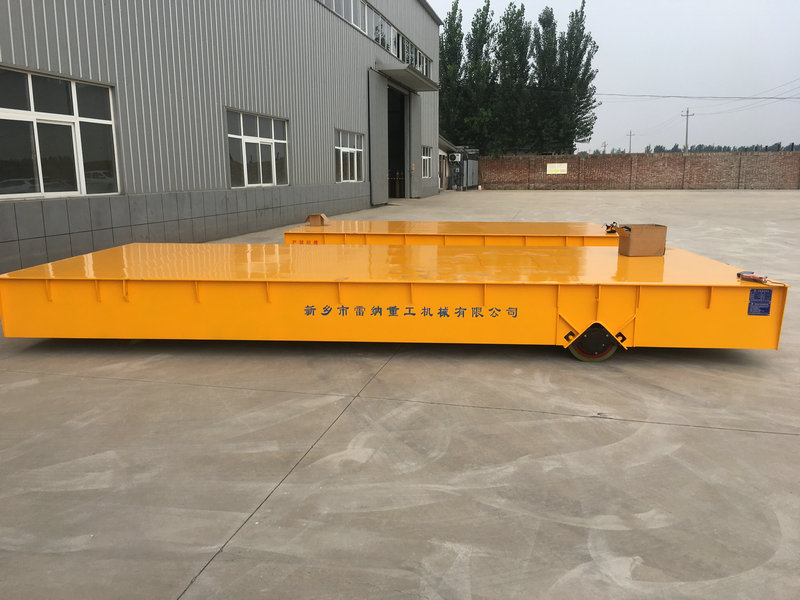In the field of modern industry and logistics transportation,trackless transfer carts, as an electric transportation equipment that can travel freely without laying fixed tracks, are gradually becoming an important tool for material handling in various places. This article will introduce the definition, structure, working principle, characteristics and application scenarios of trackless transfer cart in detail, in order to provide readers with a comprehensive understanding.
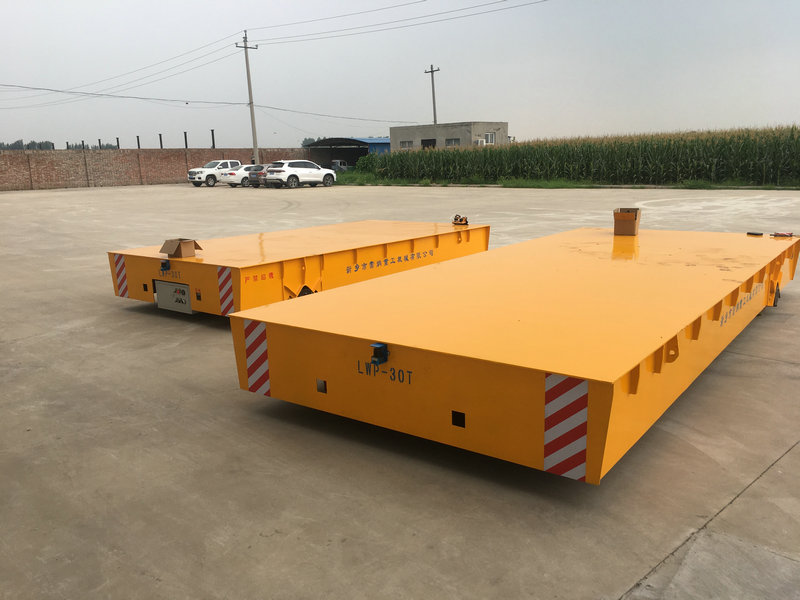
Definition and structure
As the name suggests, trackless transfer carts are electric flat cars that can travel freely without relying on fixed tracks. It is mainly composed of core components such as frame, battery (or external power supply), DC motor, reducer, rubber-coated wheels and electrical control system. The frame, as the supporting structure of the whole vehicle, is usually made of high-strength steel or aluminum alloy to ensure strong bearing capacity and beautiful appearance. The power system is composed of advanced DC motors and reducers, and is driven by electricity provided by batteries or external power supplies to achieve efficient and environmentally friendly energy utilization. The control system integrates intelligent control technology, which can realize precise control and remote monitoring of flat cars.
Working principle
The working principle of trackless transfer cart is relatively simple. It mainly drives the wheels through the motor, converts electrical energy into mechanical energy, drives the wheels of the flat car to rotate, and thus realizes the forward, backward and turning operations of the flat car. This driving mode enables the trackless transfer cart to travel flexibly in various complex environments and meet various material handling needs.
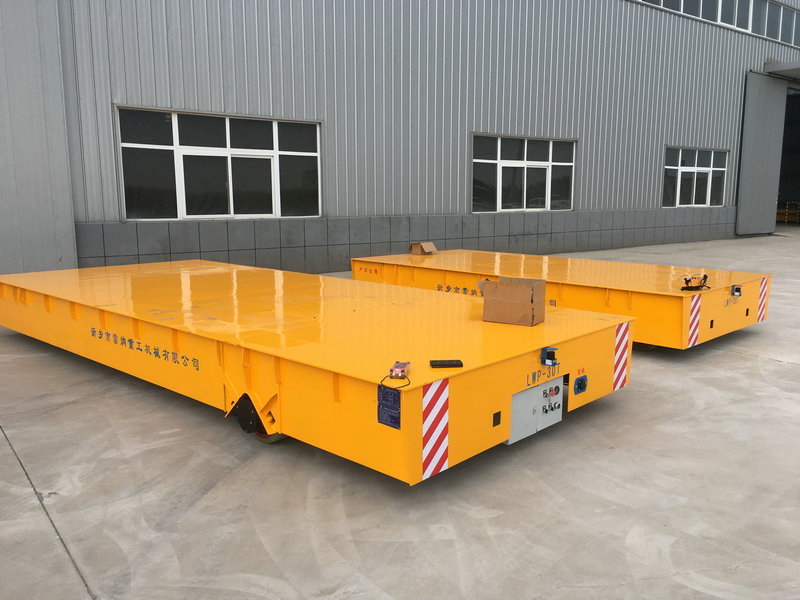
Features
High flexibility: Without the restriction of tracks, the trackless transfer cart can travel and turn freely in a wider field, and can better adapt to different working environments and operation routes.
Easy to operate: It is usually equipped with a simple and easy-to-understand control system, and the operator can get started after simple training. Some advanced trackless transfer carts also support remote control, which further facilitates the use of users.
Strong transportation capacity: Although the carrying capacity is relatively limited, the general trackless transfer cart has a carrying capacity between several tons and tens of tons, which is enough to meet various material transportation needs.
Energy saving and environmental protection: The use of electric drive reduces energy consumption and environmental pollution, which is in line with the development trend of modern green logistics.
Easy maintenance: Compared with rail transportation equipment, the structure of the trackless transfer cart is relatively simple and there is no complex track system. Therefore, in terms of maintenance, the focus is mainly on the vehicle's own drive system, control system, body and other components, with low maintenance costs and relatively short maintenance cycles.
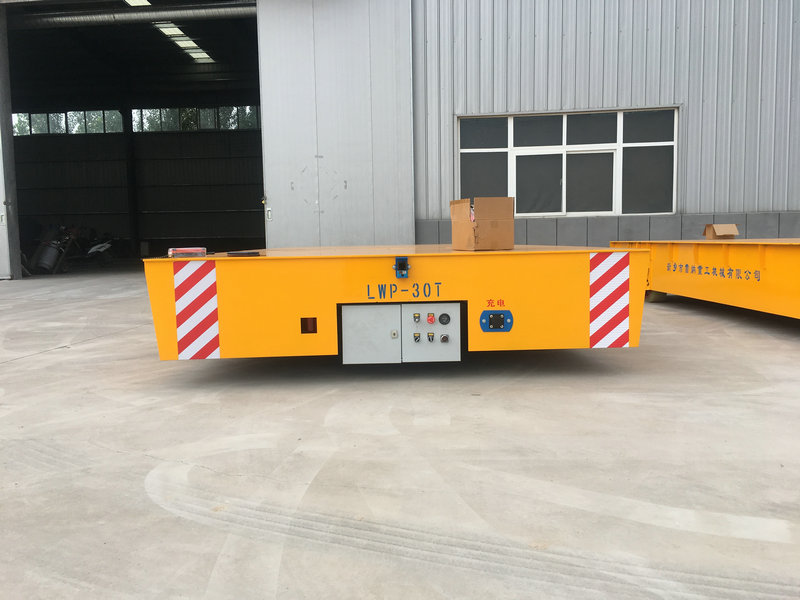
Application scenarios
Trackless transfer carts are widely used in various places due to their flexibility, high efficiency and strong adaptability:
Factory workshops: suitable for workshops where equipment is densely placed and production tasks are frequently adjusted. Trackless transfer carts can easily bypass obstacles and accurately transport goods to various production stations, improving production efficiency and logistics flexibility.
Warehouses and logistics centers: In warehousing environments, trackless transfer carts can efficiently handle the handling, loading and unloading and stacking of bulk materials, improving warehousing and logistics efficiency.




